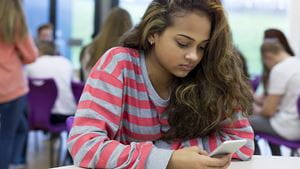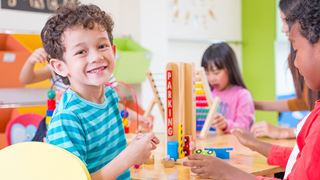Teachers & Safeguarding: Roles and Responsibilities
Safeguarding children comes into play at practically all points of a kid’s life, with a large amount of their time spent as students at school with various members of teaching staff. Whilst children go to school to learn about interesting subjects and useful skills, it’s also a critical time for teachers to provide safeguarding for their students and raise any concerns through procedures implemented by their school.
The role of a teacher in safeguarding goes beyond just classroom learning and involves being aware of a range of safeguarding risks and warning signs. Teachers are responsible for students’ welfare and since they spend a lot of time with them, they are ideally placed to notice when something seems wrong.
The topic of safeguarding in teaching involves a huge range of different situations, which is why safeguarding training is regularly required to keep teachers up to date on what they should look out for and respond to. In this article, we take a look at the key responsibilities that teachers have concerning safeguarding their students.
What is the Definition of Safeguarding?
In ‘Working Together to Safeguard Children’, safeguarding is defined as a practice that involves the following actions and aims.
- Protecting children from maltreatment
- Preventing the impairment of children’s health and/or development
- Ensuring that children can grow up in circumstances that consistently provide safe and effective care
- Taking action so that all children have the best outcomes
Whilst the general role of a teacher revolves around educating their students, the role of a teacher as a safeguarding professional is to work in a way that embodies and prioritises the above intentions.
What Are Teachers Safeguarding Responsibilities?
In the document ‘Keeping Children Safe in Education 2022’, the Department of Education states that “everybody who comes into contact with children and their families has a role to play in safeguarding children”, with teachers being among those who have the most time with children and could potentially see changes in behaviour or signs of abuse. This places them at a critical juncture for all students and makes proper safeguarding training essential to allow teachers to carry out the additional responsibilities within their safeguarding role effectively.
The Teachers Standards, as outlined by the UK government, also state that teachers should “uphold public trust in the profession and maintain high standards of ethics and behaviour” by “safeguard(ing) pupils’ well-being, in accordance with statutory provisions”. Therefore, safeguarding and a commitment to upholding the principles of safeguarding are fundamental parts of the role of a teacher.
Based on this official guidance, here are some of the most important teacher safeguarding responsibilities.
Child-Centred Approach
One of the key roles that a teacher plays in safeguarding is adopting a child-centred approach in their work. This means that the needs and best interests of the child are always considered and often prioritised when making decisions about their lives or working with their family to find the best outcomes.
A child-centred approach works around the idea that a child is always better off when looked after by their family, as long as this is a safe place for them and their family members are able to care for another person. Taking a child from their family is a last resort, unless the child is in immediate danger.
This approach is based on what children have said they want from safeguarding professionals, which includes understanding, vigilance, respect, support, advocacy and protection. If you work with children, you have a responsibility to speak and listen to them, take them seriously and work with them collaboratively to support their needs.
Safe Environments
Within the Keeping Children Safe in Education guidance, the Department of Education outlined that schools should create safe environments for children and young people. This should be done through vetting staff to ensure no adults pose a risk to students, teaching them about staying safe both in school and online, and maintaining an approachable front so that students feel confident in bringing any worries or problems they may have to staff.
It is the responsibility of the school as a whole to create these safe environments and take a proactive approach to make sure students feel safe. Teachers should contribute to this by following safer recruitment principles and taking action to ensure that children don’t face any abuse at school, either from staff or other students.
Part of creating a safe environment for students can include the digital environment that students are becoming a bigger part of, which schools will need to monitor in some form to ensure the safety of young people. There will need to be an internal discussion the school has to decide on the specific line your staff take on this.
Early Help
All teaching staff should know the signs of a child that may benefit from early help and be ready to start an investigation as soon as a problem emerges. They are responsible for understanding the situations that indicate early help may be required and should look out for the warning signs in all of their students.
Raising Concerns
As part of the safeguarding training for teaching staff, there will be key information about recognising signs of abuse and neglect in children and young people. This can include becoming withdrawn, unexplained changes in behaviour, aggression and more, all of which can be key indicators that a child is experiencing abuse or neglect in some form.
Whilst it is possible that these behaviours aren’t due to some form of abuse, they should be followed up on with the affected young person to figure out the cause. If teachers do have concerns then they will need to raise them through the proper channels which the school or institution has established as soon as possible, which may involve discussing the indicators of abuse or conversations with students with a headteacher or external agencies.
Handling Safeguarding Situations
As well as being able to spot the signs of potential safeguarding issues in schools, teachers also need to be able to respond appropriately if a child comes to them directly and shares that they are being abused, mistreated, or exploited. This involves listening to the child and taking them seriously, letting them know they will be kept safe and helping them feel that they have done the right thing.
Teachers should know who to report safeguarding issues to in their school and also understand the importance of keeping these situations confidential and only involving other relevant members of staff. Even if they don’t make a referral themselves, teachers should also know which additional services may get involved and how they may have to contribute to this.
Many children find it hard to talk about situations where safeguarding is required, so teachers are also responsible for deciding how they are going to build relationships with students so that they are seen as trusted figures.
Designated Safeguarding Lead
A designated safeguarding lead is a member of staff that has received comprehensive safeguarding training, delivers training and updates to the rest of the team, and is the first point of call if a teacher has a safeguarding concern. There may be more than one safeguarding officer in schools, and some teachers may take on this role alongside their other responsibilities.
Teachers are responsible for knowing who their school’s designated safeguarding lead is and reporting to them with any safeguarding concerns.
Safeguarding Systems
As well as being aware of the designated safeguarding lead, safeguarding in school also requires a knowledge of the internal systems that have been put in place to make safeguarding possible. This will be covered when a teacher joins the school and should be reviewed with each member of staff if it changes.
Safeguarding systems that impact teachers include a school’s child protection policy, student and staff behaviour policies, established safeguarding responses and an outline of the designated safeguarding lead’s responsibilities. The specifics of these will differ between establishments, but within these systems, a teacher will be able to find out everything they need to know about safeguarding their students and how to do this.
Safeguarding Training
Child protection training is a statutory requirement for all staff members working with children in order to provide proper care to vulnerable students and be able to implement safe working practices in schools, youth groups and other similar settings. This should be delivered annually to ensure that everyone in the school is up to date on the latest safeguarding guidance and aware of recent legislation.
If you’re looking for online safeguarding training for school staff to help develop your skills and knowledge as a teacher and ensure you’re up to date on the latest guidance, Virtual College offers a range of different safeguarding courses that are ideal for learning in your own time, no matter where you are. Our courses have been created in collaboration with leading safeguarding experts who have over 100 years of joint experience operating in the education sector to ensure our training is as comprehensive as possible.
FAQs
What is a teacher's responsibility in safeguarding?
Safeguarding for teachers involves being responsible for protecting and promoting the health and welfare of children. This involves a variety of different things, such as being aware of the signs of abuse and mistreatment, reporting concerns and involving relevant social services, building trusting and appropriate relationships with students in a safe environment, and keeping updated on safeguarding practices through training.
How often should teachers have safeguarding training?
Official guidance for teachers states that safeguarding training should be refreshed every two years. This training will often be organised by the school or organisation’s designated safeguarding lead and delivered either in person or online.
What level of safeguarding do teachers need?
Different numerical levels are used to differentiate between safeguarding training courses, but these levels aren’t standardised across every training provider so there isn’t official guidance on the level of safeguarding training that teachers need. In general, teachers often require Level 1 and Level 2 safeguarding training, or equivalent, whilst a designated safeguarding lead will need to complete higher levels or more specific training to qualify for the role.
Summary
Teachers play one of the most important roles in safeguarding children and young people, so people in this position must understand their responsibilities and work to ensure that they meet all the necessary criteria to fulfil the requirements of the role. Multiple pieces of education legislation make safeguarding a mandatory requirement for people in the teaching profession, so the best way to ensure you play your part is to regularly undertake safeguarding training.
If you’re interested in undertaking safeguarding training for education settings, we offer a specialised ‘Safeguarding in Education’ online course that is ideal for teachers wanting to develop their knowledge.









/safer-recruitment.jpg?mw=320&hash=A2BB5E144C89C295EC10C63680F69F39C4C3E566)




/e-safety-.jpg?mw=320&hash=A9FCF6B70F32AD3EA74633373FF0213B000F75FF)










































